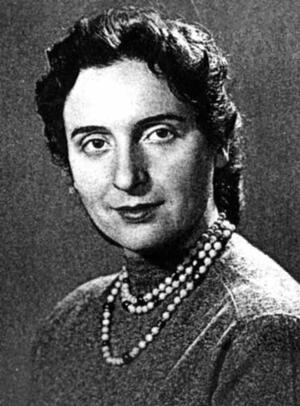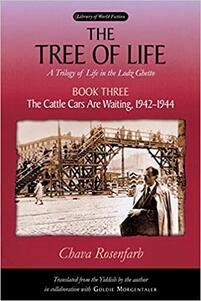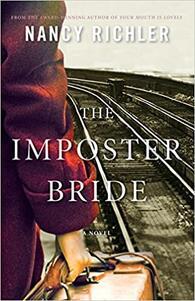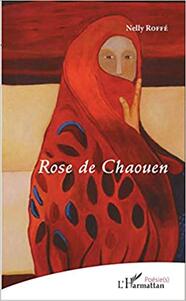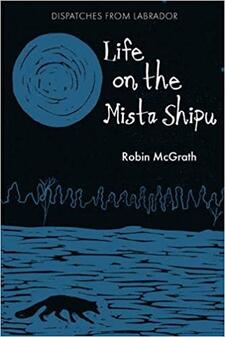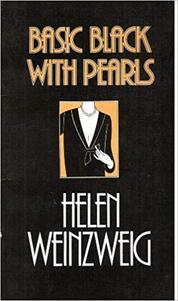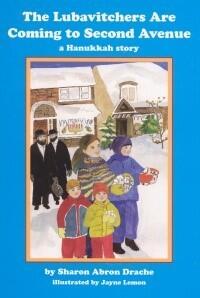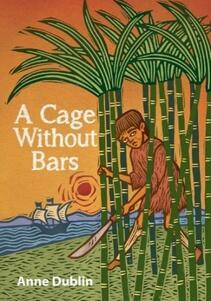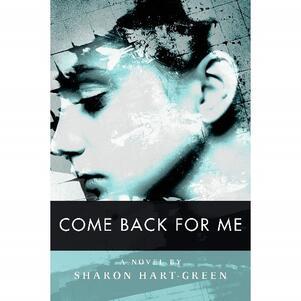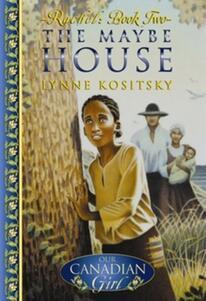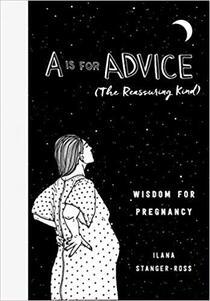Twenty-First Century Jewish Women Writers in Canada
The work of twentieth-century Yiddish novelist Chava Rosenfarb has received great acclaim in the Yiddish literary world but, reflecting the fate of much recent Yiddish writing, has gone virtually unnoticed by the rest of the reading public.
Courtesy of the book, Found Treasures © 1994 by Frieda Forman et al.
Since the earliest years of the twentieth century, Jewish women writers have addressed key issues facing Canada in imaginative ways through their creative work. Jewish women publishing in the twenty-first century use all genres to develop their ideas and stories. For the most part, they do not seek to effect socio-political change through their work; rather, they articulate and elucidate varied experiences of living within Canadian realities. Canadian Jewish women writers have explored themes of immigration, exile and memory; the Canadian experience; issues of identity; and complexities related to gender and notions of family and belonging.
“Canada does not have a regional [national] identity, but rather a series of regional identities,” Donald Savoie wrote in 2018 in The Globe and Mail, a major national daily newspaper. Canada stretches from the Atlantic Maritimes (the provinces of Newfoundland and Labrador, Nova Scotia, Prince Edward Island, New Brunswick), through the hillsides of central Canada (Québec and Ontario), across the wide Prairies (Manitoba, Saskatchewan, and Alberta), to the Pacific Coast (British Columbia). These lands were rich in furs coveted by the wealthy in early seventeenth-century Europe. The French and the British fought each other, decisively in 1760, over access to this wilderness and its lucrative waterways, creating a legacy that has deeply marked the entire history of this country. In the literary arena, forthright Jewish author Mordecai Richler comments dryly on “being raised in a country where there were only isolated voices of civilization, here a poet, there a professor, and, between, thousands of miles of wheat and indifference” (1970, 22). The formation of the Canada Council in 1957 brought significant funding to the arts, such that Richler continues: “if Canada was once loosely stitched together by railroads, such is the force of today’s culture boom that it may be reknit by art palaces coast-to-coast, though there hardly be plays or players, not to mention audiences, to fill them” (1970, 22). In 1976, perhaps to mitigate French-English tensions, Pierre Trudeau announced a formal recognition of the many “ethnic” groups that had migrated to Canada through the centuries; this recognition became legislation in the repatriated Constitution of 1982 (see Brosseau and Dewing, 2009). These comments offer a glimpse of the polyphonic experience of living in this country, an experience that has only heightened in recent decades with rising populism and an increased emphasis on rights related to multicultural policies.
Since the earliest years of the twentieth century Jewish women writers have addressed key issues facing Canada in imaginative ways through their creative work. Jewish women publishing in the twenty-first century utilize all genres—drama, fiction, non-fiction, and poetry—to develop their ideas and stories. Sub-genres run the full gamut, from science fiction to creative non-fiction. Many of these writers have worked as journalists or teachers; most have balanced writing with caring for their children and doing part-time work, often in creative writing programs. They write about their lives and the lives they see around them in their families and on the streets. For the most part, these Canadian artists do not seek to effect socio-political change through their work; rather, they articulate and elucidate varied experiences of living within Canadian realities. They are and are deeply interconnected with other places and other times, as Norman Ravvin aptly points out: “Jewish writing since the Second World War has been burdened—or, one might say, inspired—by the past” (1997, 3).
This present survey reveals the intense and vibrant literary engagement that exists not only in Montréal and Toronto but throughout the country. Just as J. J. Steinfeld in Prince Edward Island represents isolation from the mainstream, so Isa Milman, Ruth Simkin, Méira Cook, and many other Jewish Canadian writers are similarly situated outside of these major cosmopolitan centers. This survey includes a selection of women who identify as Jewish-Canadian, live in Canada, and whose work is often identified as “Jewish” not only because of the author’s origins and/or allegiances but also because of thematic choices (Waddington 1990; Panofsky 2008; Wirth-Nesher 1994). The diversity in authors, subjects, and styles echoes and illuminates a series of diasporic identities and sensibilities not only within Judaism but also within Canada, providing resounding testimony that this former colony remains a series of regional identities commingled with multiple cultural identities. Refracted within the heterogeneity of Canadian literary production by Jewish women are ever-elusive regional [national] and religio-cultural identities. This corpus thus reflects a lived national pluralism, sometimes represented within a single person, and oftentimes one that is dissonant with an official mythology of an integrated multiculturalism.
Montréal and Québec
Montréal is known as the “birthplace of Canadian-Jewish literature” (Greenstein, 2004, xii). Jewish women born at the end of the nineteenth century or in the early twentieth century who emigrated to Montréal from Eastern Europe contributed to creating a vibrant Yiddish literary culture in that city by the mid-1950s. Ida Maze (b. 1893, Ugli, Belarus, d. 1962, Montréal), Esther Segal (b. 1895, Slobkovitz, Ukraine, d. 1974, Israel), Rokhl Korn (b. 1898, Ukraine, d. 1982, Montréal), Chava Rosenfarb (b. 1923, Łódź, Poland. D. 2011, Lethbridge), and Monique Bosco (b. 1927, Vienna, d. 2007, Montréal) were important writers in that period.
The next generation, mostly native born, grew up in the shadow of pogroms and a Holocaust. Gina Roitman (b. 1948, Passau, Germany) immigrated to Montréal with her parent and brother when she was just a year and a half old. Her second-generation experience is woven into her novel Tell Me A Story, Tell Me the Truth (2008); the shock of realizing that her mother’s stories were true is beautifully articulated in her short documentary film My Mother, the Nazi Midwife and Me (2013). The film is less about providing historical data on the atrocities committed during the Second World War and more about the journey of the daughter of a survivor coming to terms with those atrocities. In The Imposter Bride (2012), Nancy Richler (b. 1958, Montréal, d. 2018, Vancouver) elucidates her experience growing up in the Jewish community in Montréal in the 1960s and 1970s through the character Ruthie. Ruthie grows up in the heart of a loving family, the presence of which is what allowed her mother to abandon her as a baby. As the novel unfolds, fragments of the pasts of the adults around her are revealed and Ruthie comes to some understanding of the experiences that shaped the person her mother became. It is, like Roitman’s film, a working out of how one can make sense of a world into which one was thrown by birth. Sharon Nelson (b. 1948, Montréal, d. 2016, Montréal), too, is part of this second generation, but her response takes a less emotional and more pragmatic approach than that of Roitman or Richler, as themes related to feminism and social justice unfold through her twelve novels and numerous other writings.
Other writers, such as Régine Robin (b. 1939, Paris), arrived in Montréal during the social and political ferment that marked 1960s and 1970s Québec. As a secular Jew, Robin fit right in with the changing times, obtaining a faculty position at Université de Montréal as well as writing creatively in her native French. The secular turn does not necessarily mean wholly rejecting religion, as Robin’s 1983 novel La Québécoite, with its intertextual engagement with the biblical story of the Exodus, demonstrates. Nelly Roffé (b. 1948, Casablanca, Morocco) emigrated to Montréal in 1967. Her book of poetry Rose de Chaouen (2008) treats the quintessential Jewish theme of exile in flowing verse evoking and conflating landscapes of Morocco and Canada.
Women also immigrated to Montréal from Israel during the 1960s and 1970s. Edeet Ravel (b. 1955, Sasa, Israel) for example, has contributed eleven novels to the field of Canadian literature. Your Sad Eyes and Unforgettable Mouth (2008) tells a story of second-generation children in Montréal, utilizing the third person narrative perspective to provide an ostensibly objective account. Ravel’s Tel Aviv trilogy (Ten Thousand Lovers 2003; Look for Me 2004; A Wall of Light 2006) provides refreshing insight into day-to-day human struggles in Israel-Palestine from the 1950s through to the twenty-first century.
Like Ravel, Ayelet Tsabari (b. 1973, Petach Tikvah, Israel), spends her time between Canada and Israel; she made her Canadian home in Halifax, teaching creative writing at University of Kings College. A promising new writer of Yemeni descent, Tsabari captures the tensions and cross-fertilization of adjusting to two cultures that reflect a reality for many in Canada. Her collection of short stories The Best Place on Earth (2016) provides an openhearted entryway into a Lit. "Eastern." Jew from Arab or Muslim country.Mizrahi community, while The Art of Leaving: A Memoir explores the profound impact of the loss of her father on the whole of her life.
Robin McGrath (b. 1949, St. John, Newfoundland), a convert from Catholicism, published her first collection of short stories, Trouble and Desire (1996), following her return to her native Newfoundland after several decades living in other parts of Canada. Her first book of poetry, Escaped Domestics (1998), integrated knowledge she gained while working as a journalist in the Canadian far north. Her subsequent works, including theater, novel, and young adult fiction, are mostly set in Newfoundland. They weave local tales and legends, as well as current social conditions, into the fabric of the stories.
Toronto and Ontario
Phyllis Gotlieb (b. 1926, Toronto, d. 2009, Toronto) began writing and publishing poetry in the early 1960s, eventually becoming best known for her works of science fiction. Her novel Sunburst (1964), with its hallmark focus on psychic powers, provided the eponymous title for the Sunburst Award for Excellence in Canadian Literature of the Fantastic. Helen Weinzweig (b. 1915, Radom, Poland, d. 2010, Toronto) also began writing in the twentieth century, with her productive work extending into the twenty-first century. Weinzweig started to write in her forties as her children grew older and her husband was busy with his own creative endeavours. Her two novels, Basic Black with Pearls (1980) and Passing Ceremony (1973), together with her collection of short stories A View from the Roof (1989), with their traces of her own experience, maintain their literary appeal.
Through her works of creative non-fiction, Erna Paris (b. 1938, Toronto) has played an influential role in contributing to the cultural imaginary that informs Canadian politics. Her interest in legal process, both domestic and international, and her sensitivity to moral imperatives in considering what is right and just have informed and been shaped by the writing and research that continues to ground her work, still vibrant and meaningful as she moves into her eighties.
Sharon Abron Drache (b. 1943, Toronto) has published four books of adult fiction and two books for children. Her novel Ritual Slaughter (1989) and her juvenile novel The Lubavitchers Are Coming To Second Avenue (2006) explore life in ultra-Orthodox communities. Anne Michaels (b. 1958, Toronto) began publishing as a poet, with Weight of Oranges (1986) and Miner’s Pond (1991). These were followed by the novel Fugitive Pieces (1996), several more books of poems, and a second novel, The Winter Vault (2009). She has also written for theater (Vanishing Points, 2005 with John Berger). In addition to being an accomplished musician (piano and violin), Michaels’ literary work engages historical events and people through evocative language that is deeply informed by extensive research.
Anne Dublin (b. 1947, Salzburg, Austria, in a displaced persons camp) has written several short stories and works of non-fiction; however, her focus audience is middle grade and young adults, for whom she has written six novels that are deeply historically informed, including A Cage Without Bars (2018), 44 Hours or Strike! (2014), and The Orphan Rescue (2010). She also writes historical fiction, such as Stealing Time (2014). Sharon Hart-Green (b. 1954, Toronto) is a Toronto writer, academic, and translator. Her debut novel Come Back For Me (2017) was the inaugural novel of the New Jewish Press, founded in 2015 at University of Toronto Press in partnership with the Anne Tanenbaum Centre for Jewish Studies. Karen Shenfeld (b. 1957, Toronto) has memorialized the north Toronto neighbourhood in which she grew up (Bathhurst Manor) and her travel experiences in two books of poetry: The Law of Return (1999) and The Fertile Crescent (2005). Her film Il Giardino: The Gardens of Little Italy (2007) portrays life in the Toronto community in which she currently lives. Alison Pick (b. 1975, Toronto) grew up in Kitchener, Ontario, but has made her home in Toronto since 2008. She has published numerous poems and short stories in venues such at The Walrus, Grain Magazine, and Fiddlehead. Pick’s first collection of poetry, Question & Answer (2003), was followed by Sweet Edge (2005), the first of five novels to date, which begins her trajectory of penetrating the dynamics of human relationships.
A number of Jewish women writers moved from Montréal to Toronto. Playwright Aviva Ravel (b. 1928, Montréal) settled in Toronto in the 1960s, although the setting for many of her works remains Montréal. She engages challenging social situations within Jewish communities, not only the Holocaust, but also adoption, eldercare, and unmarried women. Nora Gold (b. 1952, Montréal) has published two novels and a collection of short stories. An important contribution was her initiative in organizing Jewish Fiction.net, an online literary journal publishing Jewish-themed fiction, which she continues to edit. Susan Glickman (b. 1953, Montréal) created The Picturesque and the Sublime: A Poetics of the Canadian Landscape (1998), providing insightful engagement with the integration of the spectacular natural environments of Canada in a selection of literary works. Her The Violin Lover (2006) is the first of four novels to date. She has also written a trilogy of children’s books focused on the adventures of a protagonist named Bernadette, as well as seven books of poetry, most recently What We Carry (2019). Lilian Nattel (b. 1956, Montréal) published The River Midnight (1999), gently unfolding the intertwined lives of four women steeped in Polish Yiddish culture of the late nineteenth century, one of whom becomes pregnant while unmarried. While this first novel alludes to magical realism, her second The Singing Fire (2005), set in London in the late nineteenth century, intermingles characters and interconnections from seen and unseen worlds. Her most recent work, Web of Angels (2012), enters into the disturbing world of dissociative identity disorder that can result when childhood trauma is too great for the developing ego to manage. Another migrant to Toronto, Malca Litovitz (b. 1952, Hamilton, d. 2005, Toronto), published her poems in a number of anthologies as well as two collections: At the Moonbeam Café (2003) and First Day (published posthumously in 2007). She was very interested in renga, cooperative poetry writing; Slow Dancing (2008) documents the poetry written in the last months of her life together with Elana Wolff.
Some Jewish women writers have relocated to other parts of Ontario. Gabriella Goliger (b. 1949, Merano, Italy) grew up in Montréal and found a home in Ottawa. Song of Ascent (2001), ostensibly a collection of short stories, and her novel Girl Unwrapped (2010) are works of second generation in their representation of protagonists who struggle for self-identity as Canadian children of Holocaust survivors. In Eva Salomon's War (2018), Goliger moves to the period just before the Second World War to probe ideas that ultimately formed a nation out of arid desert. Her works, taken together, explore the inescapability of one’s story through characters who relocate, whether in Europe, Palestine, or Canada, whether 1930s, 1960s, or 1950s. The longing for wholeness and authenticity shines through her work, as it does in the works of other Jewish-Canadian women writers in the twenty-first century. Lynne Kositsky (b. 1947, Montréal) lives in St. Catharine’s, writing for children and young adults. Candles (1998) was the first of her five novels to date. She has written four novels for the series Our Canadian Girl (Penguin Canada) depicting the life of Rachel, a young girl who arrived in Nova Scotia from the United States in 1783: The Maybe House (Book II, 2002), A Mighty Big Imagining (Book I, 2006), Certificate of Freedom (Book III, 2003), An Elephant Tree Christmas (Book IV, 2004).
British Columbia
A number of Jewish women writers joined the literary scene in Vancouver prior to the twenty-first century, among them Miriam Waddington (b. 1917, Winnipeg, d. 2004, Vancouver ), Adele Wiseman (b. 1928, Winnipeg, d. 1992, Toronto), and Nancy Richler (b. 1957, Montréal, d. 2018, Vancouver). Rhea Tregebov (b. 1953, Saskatoon) spent many years in Toronto and has lived in Vancouver since 2004. She has published two novels and seven books of poetry. During the 1990s she crafted five children’s picture books that create delightful adventures for young children. Jewish literary activity in Vancouver has been supported by the Cherie Smith Jewish Community Centre Jewish Book Festival since 1984. In 2017 the Western Jewish Book Awards was established under auspices of the Book Festival, and writers in the west are gravitating to this cultural center.
Poet Laureate for the City of Victoria from 2008 to 2011, Linda Rogers (b. 1944, Port Alice, British Columbia) has written numerous works of poetry, fiction, and children’s books. Her non-fiction The Broad Canvas: Portraits of Women by Women (1999) profiled thirty women artists from the west coast of Canada. Another resident of Victoria, Ilana Stanger-Ross (b. 1975, Brooklyn), has written numerous short stories published in The Globe and Mail, The Walrus Magazine, and The Literary Review of Canada. Her novel Sima’s Undergarments for Women (2008) is more about an older woman’s rediscovery of life than about underwear. Her second novel, A is for Advice (The Reassuring Kind) (2019), elaborates on the topic of pregnancy, drawing on her practical experience to create a refreshing narrative on an experience that remains central to many women’s lives today.
The Prairies: Manitoba, Saskatchewan, and Alberta
The prairie lands of Canada, extending from Manitoba to Alberta, have given birth to well-known Canadian writers Adele Wiseman and Fredelle Bruser Maynard (b. 1922, Foam Lake, Saskatchewan, d. 1989, Toronto). Although born on the prairies, these women did not stay. Other Jews, however, have emigrated and settled. Ella Zeltserman (b. 1955, Pestovo, USSR) grew up around St. Petersburg. She left the Soviet Union in 1979, part of the international “Let My People Go” movement that assisted Russian Jews in obtaining refugee status in the former British colonies of Canada, the United States, and Australia, and arrived in Edmonton in 1980. Zeltserman has published two books of poetry: small things left behind (2015) and The Air is Elastic (2018). Debby Waldman (b. 1960, Utica, NY, United States) also lives in Edmonton, blending Jewish moral tales and folklore into modern children’s stories and young adult fiction.
Conclusion
Far from exhaustive, this survey of twenty-first century Jewish women writers in Canada reflects “the complicated pairing of Jewish, [Jewish female], and Canadian affiliation” (Panofsky 2016, 142). Themes of immigration, exile, and memory are predominant in the 1950s. The Canadian experience comes to the fore in the 1960s, as Canada celebrates a century of existence as a country and secondary literature in the 1970s focuses on interpretation grounded in a social conscience stemming from feminist and Marxist social justice theories. By the 1980s and 1990s, issues of identity prevailed in both the primary works and the commentaries on them. Moving into the 2000s complexities related to gender and notions of family and belonging are added to primary literary works and to the layers of themes and perspectives highlighted in secondary works of commentary.
Canada’s history is one that is, and always has been, marked by the regionalism that characterizes polyphonic experience of living within the borders of this Federation. Jewish women writers in Canada, together with those who interpret their works, catalyze a perspicacious and dynamic dialectic. This interchange deepens our understanding of the religio-cultural complexity that has existed within Judaism since the time of the Babylonian exile; it also deepens our understanding of the sociocultural complexity that has developed within the unfolding history of this former colony.
Brosseau, Laurence and Michael Dewing. Canadian Multiculturalism: Background Paper. Ottawa: Parliamentary Information and Research Service, 2009.
Greenstein, Michael. Contemporary Jewish Writing in Canada: An Anthology. Lincoln, NE: University of Nebraska Press, 2004.
Greenstein, Michael. “Other Wise: Postcolonial Places in Canadian-Jewish Women’s Writing.” Women in Judaism: A Multidisciplinary Journal 5, 1 (2007): 1‒8.
Panofsky, Ruth. At Odds in the World: Essays on Jewish Canadian Women Writers. Toronto: Inanna, 2008.
Panofsky, Ruth. “Guest Editor's Introduction.” Studies in American Jewish Literature 35, 7 (2016): 137‒146.
Ravvin, Norman. A House of Words: Jewish Writing, Identity and Memory. Montréal and Kingston: McGill-Queen's University Press, 1997.
Richler, Mordecai. Canadian Writing Today. Harmondsworth: Penguin, 1970.
Waddington, Miriam. “Introduction.” In Canadian Jewish Short Stories, edited by Miriam Waddington, xi-xvii. Oxford: Oxford University Press, 1990.
Wirth-Nesher, Hana. What is Jewish Literature? Philadelphia: Jewish Publication Society, 1994.
Savoie, Donald. “Eastern and Western Canadians are Angry – and Ottawa Needs to Wake Up.” The Globe and Mail, December 28, 2018. https://www.theglobeandmail.com/opinion/article-eastern-and-western-can…

